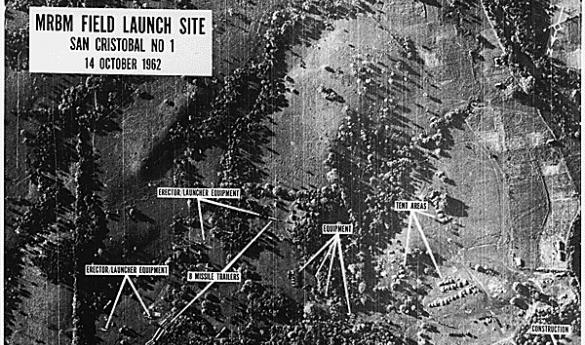Mason commemorates 50th anniversary of the Cuban Missile Crisis
To commemorate the 50th anniversary of the Cuban Missile Crisis, George Mason University in conjunction with the Cold War Museum, held a series of panels on Oct. 27.
“There are many explanations for why the Cuban Missile Crisis occurred,” explained Dr. Sergei Khrushchev, son of the late Soviet Premier Nikita Khrushchev. “All of them wrong.”
Fifty years ago, Oct. 27, 1962, the world came the closest it ever had to nuclear war. American surveillance detected Soviet nuclear missiles positioned throughout Cuba, and over the next thirteen days a series of diplomatic negotiations shut down and the conflict escalated to the verge of nuclear war.
A set of panels commemorating the 50th anniversary of the Cuban Missile Crisis was hosted by George Mason University in conjunction with the Cold War Museum on Oct. 27. The panels explored the conflict in a roundtable discussion moderated by Martin Sherwin, a Pulitzer Prize winning author and professor of history at Mason.
The first panel investigated the causes of the incident in the days and weeks before, and featured pilots Col. Buddy Brown and Lt. Commander Tad Riley, photographic interpreter Dino Brugioni, and Khruschev. Brown and Riley both related their stories of surveillance from their U-2’s and F8U-1P Crusader’s respectively. Brown called special attention to downed pilot Rudolf Anderson, the only life lost in combat during the incident, and to the other pilots who spent exhaustive months conducting very dangerous surveillance.
Brown’s stories about life flying U-2’s paint exactly how challenging that environment was.
“The pressure there is low, so low in fact that human blood boils at normal human temperature. It’s an ordeal, to be sure, but I only had two brain cells at the time: one to eat and one to fly,” Brown said.
Brugioni continued with stories of the photo analysis, which consisted over closely examining yards of film. It was Brugioni’s team that spotted the missile complexes and identified them as Soviet SS-4 Ballistic Missiles and apprised President Kennedy of the situation.
“The President was quiet throughout the entire presentation, just watching, and when I got to the end he looked me dead in the eyes and asked if I was sure,” Bruigioni said. “I responded that I was as sure as we could possibly be and that we’d never led him astray. He nodded very solemnly and just said, ‘Okay.’” said.
The second panel focused more on the crisis from a historical standpoint, featuring the National Security Archive’s director for Russian Archives and Institutes Svetlana Savranskaya, and Michael Dobbs, Washington Post reporter and author of One Minute to Midnight. Khrushchev opened with a speech attributing the affair to a series of miscommunications and concluding that the key to avoiding such future calamities is maintaining open diplomatic channels.
“There was an exchange between Kennedy and my father. Kennedy very frankly told him, ‘we have enough nuclear missiles to destroy you ten times over’ and my father responded, ‘well, we only have enough nuclear missiles to destroy you once’,” Brugioni said. “But Khrushchev and Kennedy aren’t thinking about how many they can kill, but how many they’d sacrifice. We could both destroy each other, but is that really a victory?”
Savranskaya and Dobbs discussed the presence of tactical nuclear weapons in Cuba, and how the planned invasion had not taken into account the substantial presence of Soviet troops stationed on the island.
Meanwhile, following a question about the Russian cultural reaction to the crisis, Khrushchev shrugged it off as not nearly as dramatic as America’s:
“Russia is always on the precipice of war, from all sides. What’s one more disaster in a history full of them?”

